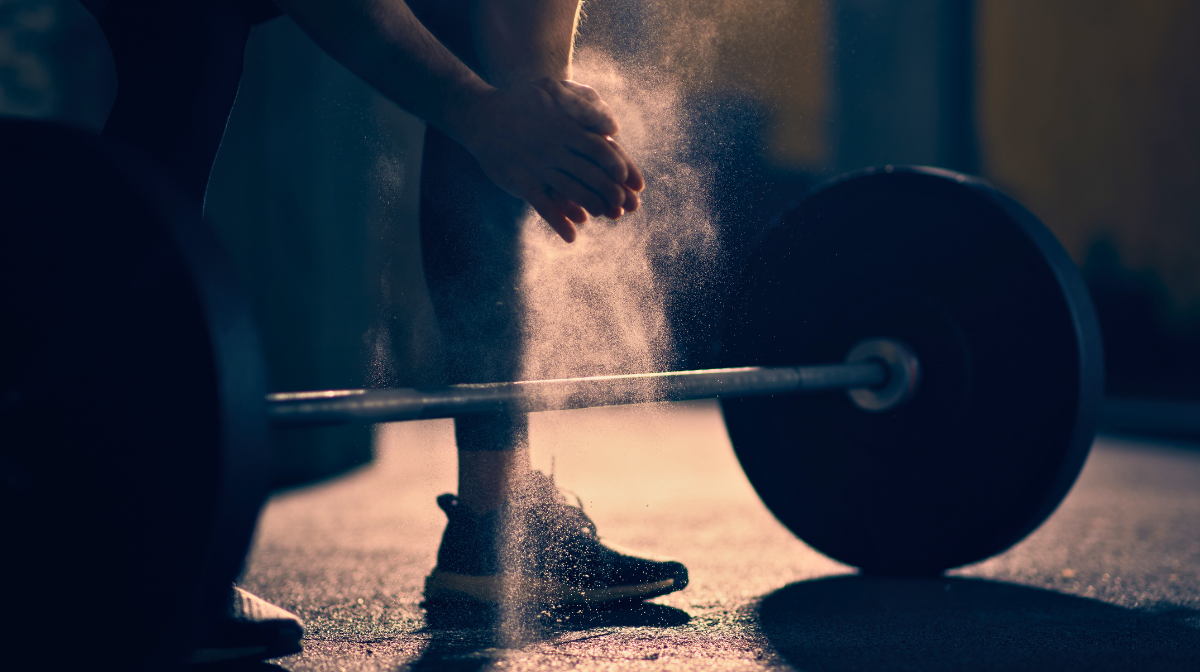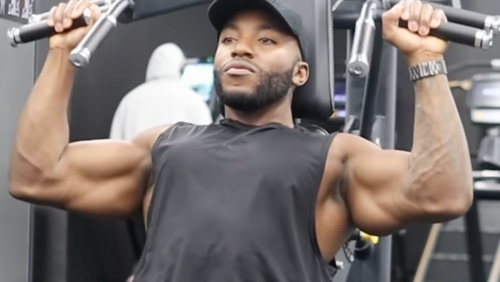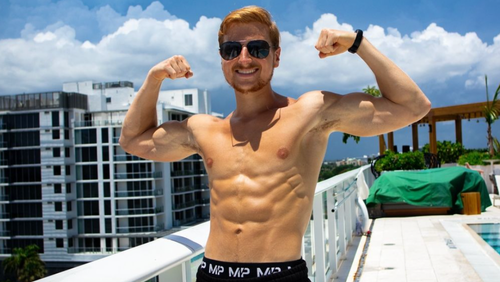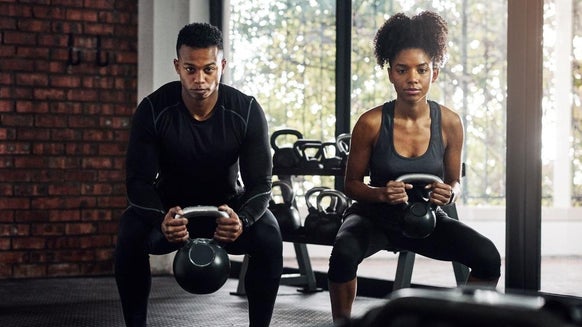
While everyone has different goals at the gym, many of us strive to build muscle. This could be for health-related reasons, aesthetics, or simply because you enjoy it. Either way, big muscles mean you're strong, right? Well, not necessarily. Strength and muscle are not as directly correlated as you might think.
Ambassador and Youtuber Igor Openshansky is here to break down the relationship between muscle mass and strength, including the difference between the two, why it's important, and the practical implications. Let's see what he has to say.
Jump to:
- The Difference Between Strength and Muscle
- Studying the Muscle and Strength Connection Among Powerlifters
- Studying the Muscle and Strength Connection Among Normal People
- Three Different Comparisons and Contexts
- Practical Implications
The Difference Between Strength and Muscle
If strength and muscle mass were directly correlated, then building an aesthetic would be quite simple—if you train and get stronger, then you'll get the look you want. But, like all things in life, it's more complicated than that.
Igor explains that muscle mass is influenced by various factors, including genetic factors like bone structure and muscle fiber and environmental factors like differences in training.
But just because building strength isn't directly correlated to building muscle, doesn't mean it's not important.
Studying the Muscle and Strength Connection Among Powerlifters
To understand more about the strength and muscle relationship, Igor presents a new study, published in J Funct Morphol Kinesiol, titled "Lean Body Mass, Muscle Architecture and Powerlifting Performance during Preseason and in Competition."
The study analyzed if changes in lean body mass would impact performance in powerlifters. Researchers took eleven powerlifters that were preparing for competition and measured their strength and muscle mass.
The powerlifters' strength was measured through maximum strength 1RMs (one repetition maximum) for various movements like the deadlift, bench press, and squat. Their muscle mass was measured using DXA scans and an ultrasound for the quad muscles.1
The results of the study showed a strong positive correlation (.75) between strength and muscle mass, however, Igor points out that there are some caveats.1
This study used powerlifters, who are extremely experienced with weight training. What would happen if you studied regular people? This leads us to the next study...
Studying the Muscle and Strength Connection Among Normal People
To evaluate the relationship between muscle mass and strength in normal people, Igor presents a second study, published in the European Journal of Applied Physiology, titled "Changes in agonist neural drive, hypertrophy and pre-training strength all contribute to the individual strength gains after resistance training."
This study determined the correlation between strength and muscle mass by assessing regular individuals performing quadriceps and leg extension exercises. Researchers found a positive correlation of .46, however, this is a much less significant correlation than the one found in the powerlifters study.2
Igor posits a possible explanation for this. The reason why strength and muscle mass might've had a stronger correlation within a group of powerlifters is likely because powerlifters train very similarly to each other and train for strength. Powerlifters focus on lifting the maximum amount of weight possible—their training is centered around getting stronger because this is their goal.
Meanwhile, regular individuals or bodybuilders often train in a way to sculpt a specific body, one that appears very strong but isn't necessarily as powerful as it looks. Additionally, the type of training regular individuals practice can vary widely.
Ultimately, the two studies demonstrate that there can be a significant correlation between strength and muscle mass, but it depends on the context...
Three Different Comparisons and Contexts
1. Comparing You to Yourself
Igor explains that you'll find the strongest correlation between strength and muscle mass when comparing different versions of yourself during different time periods.
For instance, if you start out bench pressing 135 lb and then train and make your way up to 225 lb, chances are, you'll have a bigger chest now, as well as be stronger. This demonstrates a strong correlation between muscle mass and strength.
2. Comparing Different Individuals with Similar Training Styles
The study on powerlifters was an example of this case, where you're comparing different individuals who have similar training styles. This scenario also demonstrated a strong correlation between muscle mass and strength.
3. Comparing Different Individuals with Different Training Styles
The second study, looking at regular individuals, represents an example of this third comparison. When individuals are different and have different training styles, you'll find the weakest correlation between muscle mass and strength when comparing them.
So... what does this all mean?
Practical Implications
As Igor explained, there's definitely a connection between the size of your muscles and how strong you are, but how significant that connection is, depends on the situation.
With this information, the ambassador gives us a few takeaways:
We saw that when comparing different individuals with different routines, muscle mass and strength are not super correlated.
This means that when building a workout routine for yourself, you can't expect the same results as someone else simply by mimicking their routine. Igor points out this is a mistake he used to make. Just because someone looks a certain way using their routine, doesn't mean you will look the same by lifting the same amount of weight or doing the same movements, etc.
Additionally, Igor explains that although there are tons of details that fitness influencers will advise you focus on to achieve a certain aesthetic, most of the time, if you put your energy toward getting stronger, you'll look bigger as a result.
Lastly, Igor's final tip is to be consistent with whatever exercise you're doing. He explains that many people make the mistake of cycling through different routines too frequently and not improving their strength/ability in one specific area.
To see results, you need consistency, and this means doing the same movement again and again, even if it gets a little boring.
Take Home Message
The relationship between muscle mass and strength isn't super straightforward—just because you build a lot of muscle, doesn't necessarily mean you're going to have significant strength.
There's nothing wrong with building muscle mass simply to strive for a specific aesthetic, but as ambassador and Youtuber Igor Opeshansky points out, comparing yourself to others is not the best metric, since muscle mass can be influenced by genetics as well as other factors.
Plus, building strength is important for functional fitness as well as general health and shouldn't be disregarded.
When working toward a fitness goal, the best person to compare yourself to is you. In most cases, in focusing on improving strength and staying consistent with your movements, you'll start to see aesthetic results and a bigger build, or as Igor puts it, get jacked.
READ THESE NEXT:

They Did Pull-Ups For 24 Hours Straight, It Went Wrong
Let’s say it wasn’t exactly plain sailing......

Push Day Workout with Ben Chidiebele
maintain motivation to ensure that your time and efforts are used productively.....

What Not to Do When Losing Weight With Cohnan Kotarski
Getting in shape is as much about knowing what to do as knowing what to avoid....
A Rutgers University Honors graduate, Jamie grew up on the Jersey shore and double majored in Comparative Literature and Anthropology in college. Jamie is an experienced writer in the health and wellness, biotech, and eCommerce fields. She loves writing with a purpose and has even written for the Department of Justice.
Jamie became drawn to exercise during her time in university and began to notice the physical and mental benefits of moving your body daily. Today, Jamie enjoys Pilates, light weight training, and going on long walks in nature daily.
Jamie is also passionate about eating right and prioritizing gut health and immunity. She is always trying the next innovation in health and wellness. When she’s not writing articles, Jamie enjoys reading, playing guitar, and finding dogs to play with.
1. Tromaras K, Zaras N, Stasinaki AN, Mpampoulis T, Terzis G. Lean Body Mass, Muscle Architecture and Powerlifting Performance during Preseason and in Competition. J Funct Morphol Kinesiol. 2024 May 22;9(2):89. doi: 10.3390/jfmk9020089. PMID: 38804455; PMCID: PMC11130886.
2. Balshaw, T.G., Massey, G.J., Maden-Wilkinson, T.M. et al. Changes in agonist neural drive, hypertrophy and pre-training strength all contribute to the individual strength gains after resistance training. Eur J Appl Physiol 117, 631–640 (2017). https://doi.org/10.1007/s00421-017-3560-x











